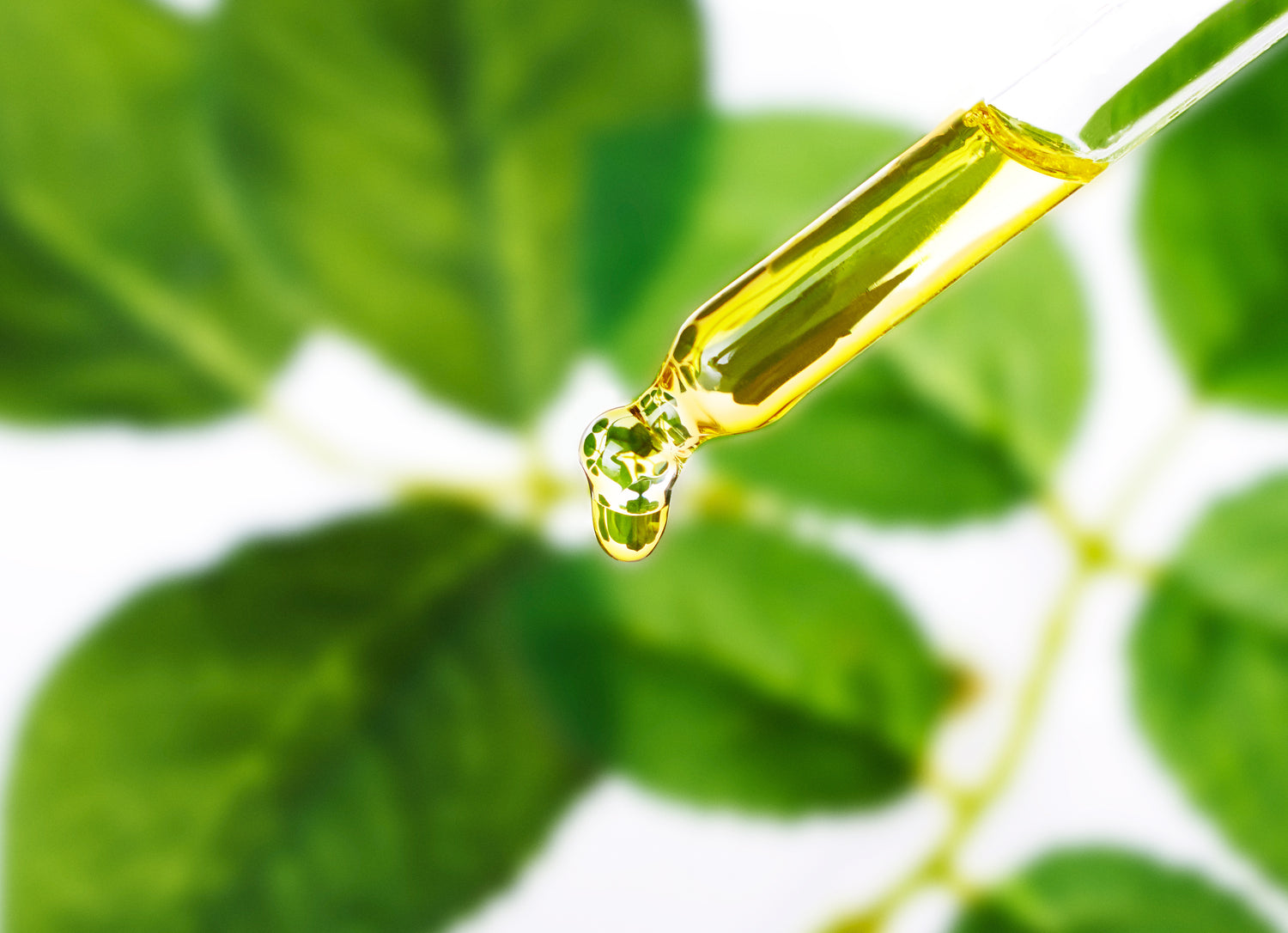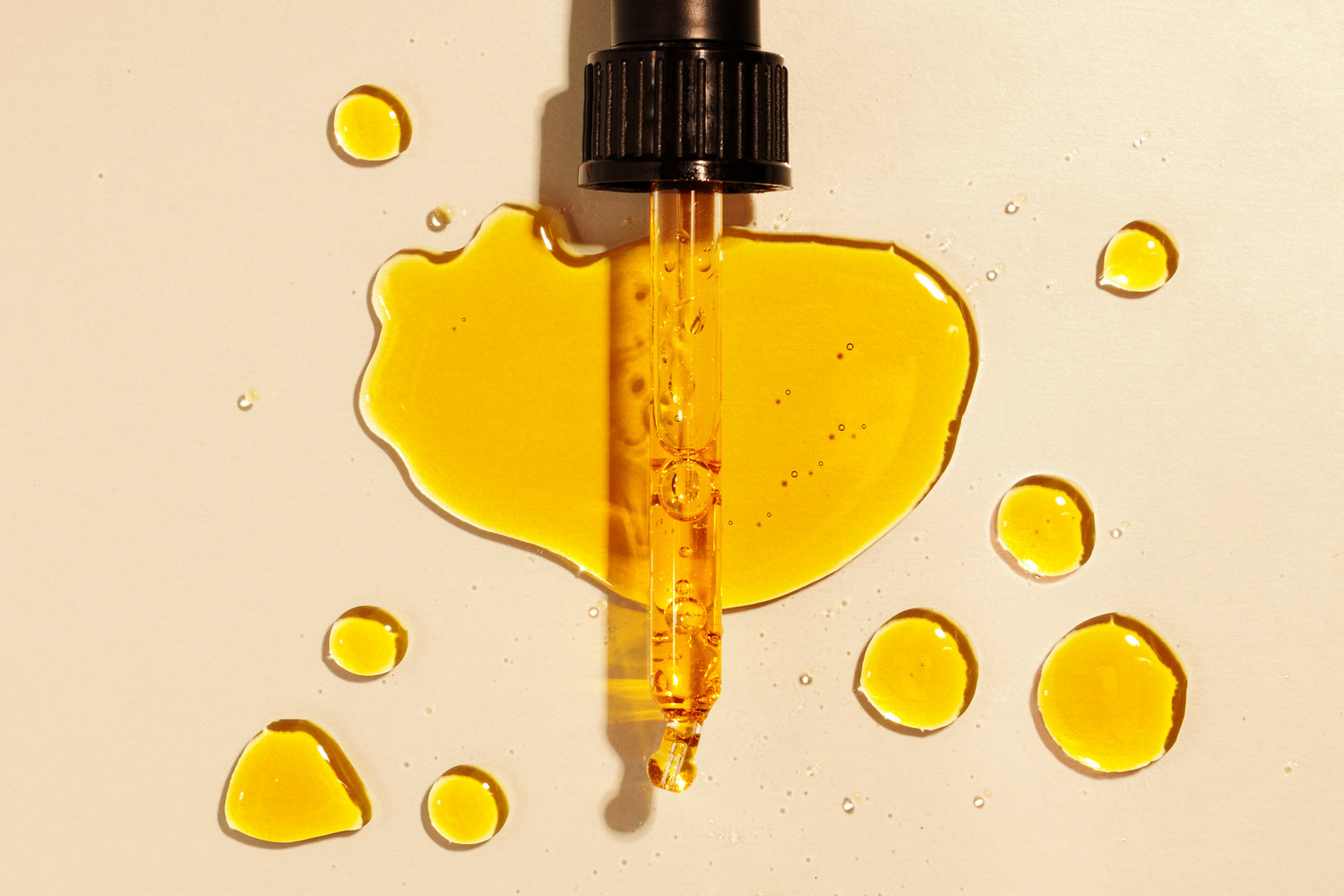
What is TheraExtract™?
TheraExtract™ is a proprietary, raw extraction process designed to do one thing brilliantly:
Capture the full spectrum of a plant’s therapeutic compounds and deliver them to your skin in their peak bioavailable form…
For ultra-deep absorption that nourishes and transforms at the cellular level.
WITHOUT synthetics, chemicals or toxic ingredients of any kind!

How does the multi-step TheraExtract™ Process Work?
1. Bespoke Botanical Sourcing and Preparation.
We start with hand-selected botanicals chosen for their therapeutic properties.
Through decades-long relationships we’ve fostered with small sustainable farmers around the world, we’re able to purchase directly from our farmers.
This allows us to purchase fresh ingredients that are ethically grown and harvested at their prime, to maintain freshness and therapeutic potency.

2. Waterless Concentration.
Next, these carefully prepared whole botanicals are added to antioxidant-rich, cold-pressed oils that are specifically selected because of their synergistic effect with each of the whole botanicals used.
No water. No fillers. No shortcuts.

3. Peak Potency.
Finally, the TheraExtract™ process is complete when the full plant matrix—vitamins, antioxidants, fatty acids, enzymes—reaches peak therapeutic-grade bioavailability for ultra-deep absorption and correction at the cellular level.

The Result?
A raw botanical concentrate so potent, it sets a new standard in therapeutic-grade purity and performance...

How TheraExtract™ sets a NEW standard in therapeutic-grade performance:
1. Potency Redefined.
Rather than isolating one compound or one active ingredient, TheraExtract™ Technology preserves the full matrix of the plant, including:
Vitamins, antioxidants, fatty acids and enzymes...
This means your skin is flooded with the full spectrum of phytonutrients working synergistically, which research shows is far more effective than isolated compounds (Lila, 2004).

2. Deep Penetration Without Chemicals.
TheraExtract™ Technology achieves cellular-level penetration—not by disrupting your barrier with chemicals (like most other therapeutic-grade skincare formulas)...
But rather by working with the skin’s natural lipid pathways.
Studies confirm that lipid-based delivery enhances dermal absorptionwithout irritation (Hadgraft & Lane, 2005).
And because it's pure and free from chemicals and toxins, it's safe for all ages and all types of skin!

3. Purity Beyond.
You can feel 100% safe applying each product to your skin, because of our Absolute Purity Guarantee.
Our proprietary waterless formula contains ZERO synthetics, additives or toxins.
And because we master-craft each step of the process in our own facility... you can be assured you are getting exquisite quality that is 100% safe!
Let customers speak for us
from 4 reviewsI highly recommend!
My skin is firmer around my eyes and much more hydrated overall. My daughter always tells me how good I smell after applying. I highly recommend!
Shirley H.
10/28/2025

Corrective Facial Treatment 15ml
Smells so good!
I have used the Corrective Facial Treatment for almost a week now, and I like how it smells and that I don't need much to cover my face and neck with the oil.
Barb G.
10/26/2025

Corrective Facial Treatment 15ml
Everyone should use it!
I absolutly love, love, love the facial oil. I considerate to be beautiful. I'm 71 so there's not a whole lot of change but it makes my skin feel so good. I think everyone should use it!
Sherry C.
10/23/2025

Corrective Facial Treatment 15ml
Pure
I really like knowing this is pure with no chemicals. I am noticing a softening of my skin on my face.
Jean M.
10/23/2025

Corrective Facial Treatment 15ml
TheraSerum™ Firming Collection
-
Nourishing Facial Balm 15ml
Regular price $115.70 USDRegular priceUnit price / per -
Corrective Facial Treatment 15ml
Regular price $127.40 USDRegular priceUnit price / per -
TheraSerum™ Mini Collection
Regular price $75.00 USDRegular priceUnit price / per$89.96 USDSale price $75.00 USDSale



